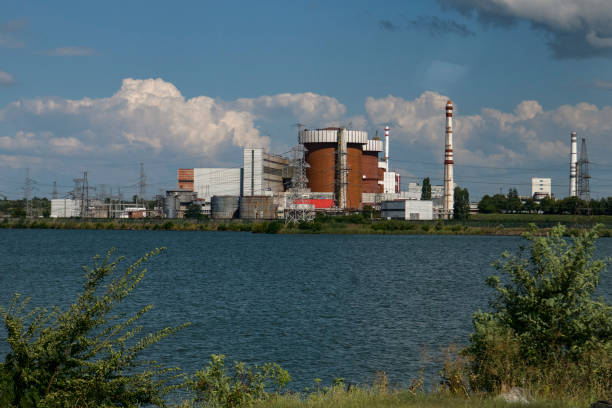Energy Strain Deepens: Three Ukrainian Nuclear Plants Forced to Reduce Generation

Due to nighttime attacks on the power grid, several Ukrainian nuclear power plants were forced to temporarily reduce their output.
The Gaze reports on it, referring to the International Atomic Energy Agency.
After attacks on the power grid overnight, several of the country's operating reactors were forced to reduce their output. The Zaporizhzhya Nuclear Power Plant, where six reactors are in cold shutdown, lost connection to the 750 kV Dniprovska high-voltage line on Friday evening.
The line was restored on the morning of November 19 after repair work approximately 16 km from the station, providing the station with access to two external power lines. Access to external power is critical for cooling reactors and maintaining safety functions.
Although the Zaporizhzhya Nuclear Power Plant (ZNPP) has restored its connection to the main power line, the overall situation at Ukraine's nuclear power plants remains unstable due to the ongoing military conflict.
In addition, production has already been reduced at the Khmelnitsky and Rivne nuclear power plants due to the loss of connection to high-voltage lines, and 11 drones were spotted near the South Ukraine NPP. As a result, IAEA teams based at the stations were forced to seek shelter during the morning alerts.
IAEA Director General Rafael Grossi stressed the importance of adhering to five key safety principles and emphasized that military actions continue to negatively affect the power grid throughout Ukraine.
The agency has organized two new deliveries of aid to Ukrainian nuclear power plants, bringing the total number of deliveries since the start of the conflict to 176. The equipment received includes laboratory materials for the Mykolaiv regional laboratory and medical supplies for the staff of the Khmelnitsky NPP, financed by Belgium and Japan.
The Ukrainian Ministry of Energy explained that nuclear power plants are forced to reduce their capacity during Russia's massive missile and drone attacks.
First, this is a preventive reduction to comply with safety requirements due to the risk of sudden shutdowns of high-voltage lines. Second, the immediate cause is strikes on Ukrenergo substations that provide electricity transmission.
Earlier, on the night of November 8, Russia launched planned missile strikes on substations supplying electricity to the Khmelnytskyi and Rivne nuclear power plants, causing serious disruptions to the Ukrainian power grid.
The IAEA confirmed that as a result of the strikes, both stations were forced to reduce electricity production. At the same time, Centrenergo, one of the largest power generating companies in Ukraine, reported extensive damage to its energy facilities.
The Gaze previously reported that, on the territory of the Zaporizhzhya Nuclear Power Plant (ZNPP), an increase in Russian military presence has been observed, with armored personnel carriers and infantry positions.
Read more on The Gaze: IAEA: Russian Strikes Damage Substations Critical to Ukraine’s Nuclear Safety